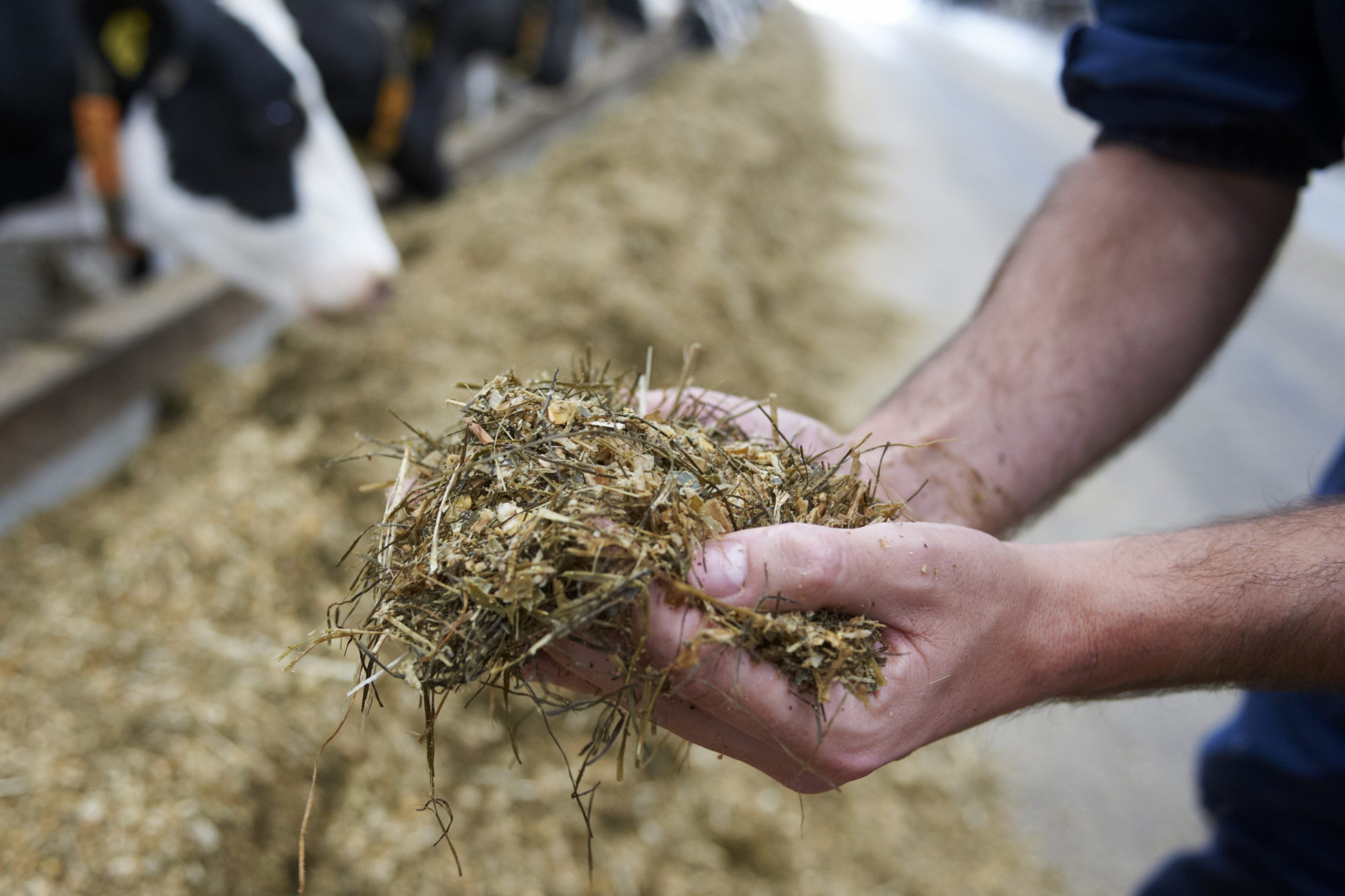Dairy cow diets: Watch the mycotoxins

Mycotoxins should be watched in total mixed rations (TMR) for dairy cattle.
Mycotoxin occurrence and concentration vary by year. The limits established for dairy cattle by the FDA for aflatoxin B1, vomitoxin, and fumonisin. are 20 ppb, 5 ppm, and 30 ppm, respectively. The FDA has not published maximum concentrations for other mycotoxins with known deleterious effects on cattle such as T-2 (trichothecenes), ochratoxin, or zearalenone. Although the FDA does not suggest safety guidelines for zearalenone, the European Commission established 250 ppb as the maximum legal limit in complete feed for this mycotoxin.
Effect of ruminal pH
Because of mycotoxin degradation in the rumen, dairy cattle can resist better than other livestock the adverse health effects associated with their exposure. Therefore, the conditions in the rumen may affect the bioavailability of the mycotoxins and its rumen metabolites. A study conducted at the experimental animal facilities of INRA Auvergne-Rhône-Alpes (France) and published recently in the Journal of Dairy Science (Pantaya et al, 2016) investigated the effects of low ruminal pH on the bioavailability of mycotoxins in nonlactating dairy cows. Cows were fed a low- (15% starch dry matter basis) or a high-starch diet (30.8%), and received a single dose of mycotoxin contaminated cereal mixture containing 0.05, 0.2, 0.24, and 0.56 mg of aflatoxin B1, ochratoxin A, vomitoxin, and fumonisin B1 per kg of feed, respectively, through a ruminal cannula.
As expected, cows fed the high-starch diet had lower pH values, and they spent more time under the threshold pH value of 5.6 (0.5 vs. 2.6 hours/day). The authors found high-starch diet increased the bioavailability, estimated as an increase in the urinary excretion of the mycotoxin or its metabolite, of ochratoxin A and aflatoxin B1; however, the bioavailability of vomitoxin and fumonisin B1 remained unchanged.
Aflatoxins
After ingestion, aflatoxin B1 is bio-transformed into the secondary metabolite aflatoxin M1. The FDA has limited the concentration of this metabolite in milk to a maximum of 0.5 ppb. Interestingly, the maximum milk aflatoxin M1 concentration allowed by the European Commission is 10 times lower (0.05 ppb). Clay-based sequestering agents have traditionally been used to reduce the toxicity of aflatoxin in dairy cattle diets. A recent study carried out at the University of Illinois determined the effects of dietary clay supplementation in response to an aflatoxin B1 challenge. The researchers (Sulzberger et al., 2017) examined the concentration, transfer, and excretion of aflatoxin M1 in the milk of dairy cows fed 3 different concentrations of clay (0.5, 1, or 2% of dietary dry matter intake) and diets artificially contaminated with aflatoxin B1 (100 ppb). The clay used in this experiment had the following composition: magnesium = 7.2%, silicon = 6.3%, aluminium >5%, iron = 6.9%, potassium = 0.5%, and manganese <0.1% of dry matter, respectively.>
It was shown that cows supplemented with clay had lower aflatoxin M1 excretion in milk (0.5% clay = 20.83, 1% = 22.82, and 2% = 16.51 µg/day) and aflatoxin transfer from rumen to milk (0.5% =1.01, 1% = 0.98, and 2% = 0.74%) compared with cows were not fed with clay (aflatoxin M1 excretion in milk = 27.81 µg/d and aflatoxin transfer = 1.37%). Similarly, concentrations of aflatoxin M1 in milk (0.5% = 0.35, 1% = 0.30, and 2% = 0.25 ppb) were reduced in cows fed clay compared with no clay (0.43 ppb).
Conclusion
Mould growth and mycotoxin production in crops depend upon weather conditions and therefore, may change between years. Yeast, moulds, and potentially mycotoxins can frequently be found at variable concentrations in feedstuffs. Their concentration that could be deemed relatively safe in one individual feedstuff can be potentially harmful when compounded with that of other contaminated feeds. Sample analyses and adequate dietary intervention can prevent the detrimental effects of these feed contaminants on dairy cow performance.
Co-Author: Nuria García DVM is a Research Scientist in Food and Animal Sciences in the Animal Disease Research and Diagnostic Laboratory at South Dakota State University. Nuria.Garcia@sdstate.edu











